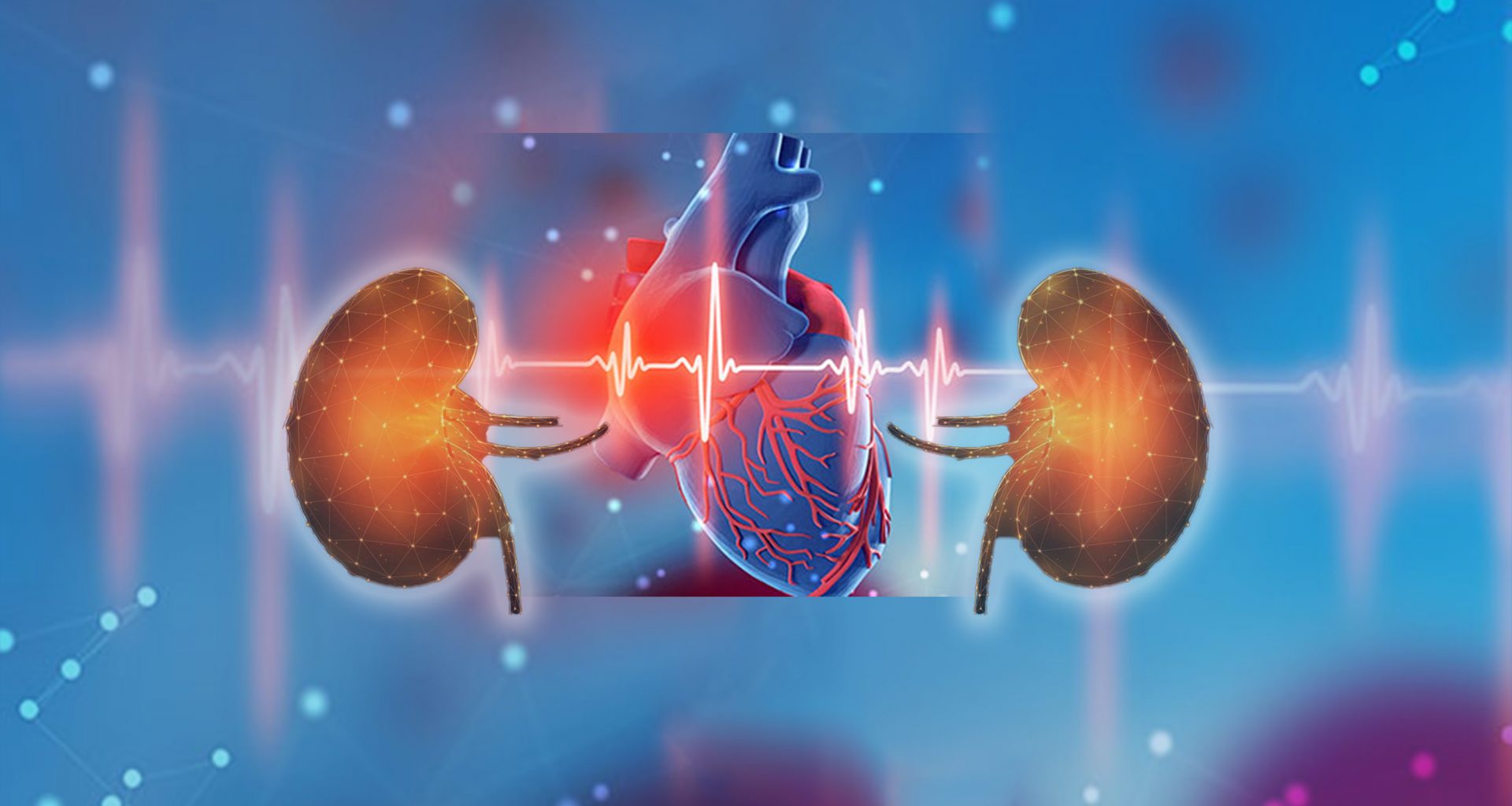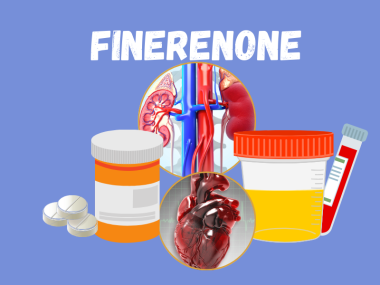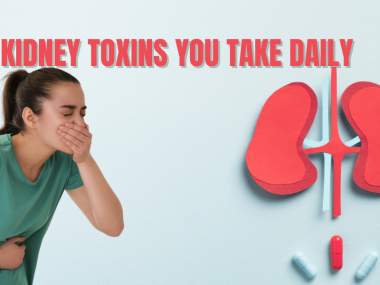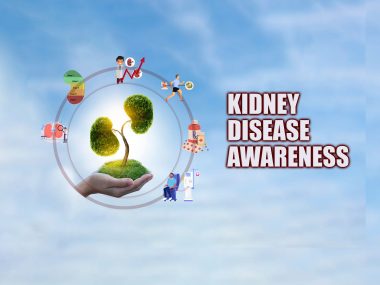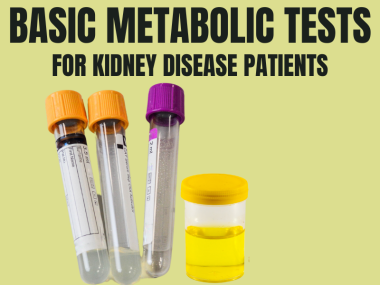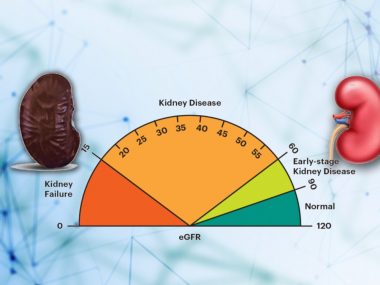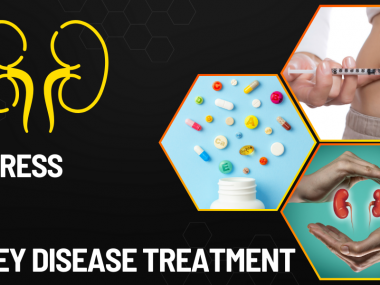Heart failure and kidney failure often occur together. It is because when either the heart or kidney fails, the other organ is, sooner or later, bound to fail, too. Diseases of the heart and kidney share a deep historical relation, known to our ancestors many centuries before the scientific evidence of modern medicine confirmed this connection. Now we even have a fancy name to describe this link—cardiorenal syndrome.
Whether it is heart failure that leads to kidney failure or vice versa, a patient whose heart and kidney are sick simultaneously confers considerable treatment challenges.
How the Heart Affects Kidneys
A sick heart can affect kidneys in many ways, but only three heart conditions primarily lead to kidney disease.
Coronary Artery Disease—Bad Vessels
The most common is coronary artery disease, the thickening and narrowing of blood vessels in the heart. Since this disfiguring of the blood vessels occurs throughout the body, it also involves the kidneys. As a result, the blood finds it difficult to squeeze past these narrowing pipes, slowly choking the kidney tissue and causing tissue injury.
Heart Failure
Next comes heart failure, a condition when the heart fails to keep up with the body’s demand for blood supply, which results in excessive fluid buildup, most commonly seen as swelling around the ankles. When excessive fluid accumulates in the body, it somehow causes congestion in the blood vessels of the kidney, which react by squeezing against this pressure and, in turn, damage the kidneys.
Arrhythmias
Then, conditions that disturb the heart rhythm can also disrupt kidney function. The most common among them is atrial fibrillation. It may be hard to find a causal association between atrial fibrillation and kidney disease, yet many nephrologists believe that atrial fibrillation affects the kidneys in the same way it affects the brain—by throwing off clots. A heart in atrial fibrillation keeps pouring a constant stream of microscopic blood clots into circulation. In the brain, they cause a stroke; in the kidneys, chronic kidney disease.
How Kidneys disease Affects Heart
Chronic kidney disease arouses an inflammatory state throughout the body, leading to atherosclerosis in the blood vessels. Atherosclerosis of the vessels that supply blood to heart muscles causes coronary artery disease, which can, in turn, trigger a heart attack.
In its late stages, kidney failure almost always triggers heart failure. This is because as kidney disease advance into its late stages, it fails to get rid of the extra salt and water from the body. Initially, the heart responds to this additional burden by pumping hard against the build-up fluids, but it ultimately gives up, and the accumulated fluid starts to show up around the ankles, heralding heart failure.
Heart Failure and Failing Kidneys
For our purpose, we will focus solely on a situation when both heart failure and kidney failure concur in the same patient, an unfortunate condition when both organs, instead of supporting, start to undermine each other’s function. At this stage, certain medications that would be helpful for either condition alone become hard to use. Adverse effects, dosage problems, and unwanted consequences—all these make the management of combined heart and kidney failure a nightmare. This tricky situation turns the treatment into an arduous task, demanding at every step caution and vigilance.
Watch Your Water Intake
Patients with heart failure are familiar with the idea of fluid restriction. In most cases, they know how much water to drink, usually not more than 2 liters a day, and as soon as they see their ankles swell, they step back and consume even less for a day or two. When the swelling subsides, they know it’s time to relax the restriction.
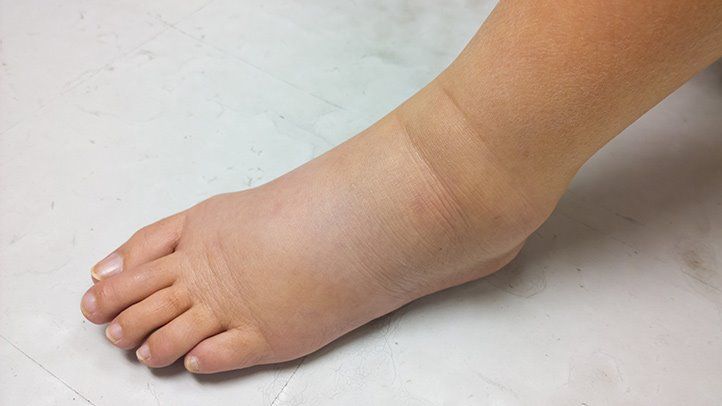
However, when a heart failure patient develops kidney failure, things are no longer that simple. The patient still needs to learn the maximum fluid he can drink in a day, but once he has crossed these limits, returning from the fluid overload state becomes a huge challenge. This time, tighter restriction of fluids comes with consequences: it worsens renal failure. Therefore, nephrologists always educate their patients about the upper as well as lower limits of the liquid they can use. And they try to soften the psychological impact of this severe restriction by naming it as a “sweet spot.”
Once a kidney failure patient wanders out of this sweet spot, it may take days to weeks to return to his baseline, often with a lot of intervention, such as water pills and even hospitalization.
Skip the Salt
Any deviation from salt restriction puts these patients into similar difficulties. Since water follows salt, eating more salt means retaining more water. Consequently, CKD patients with heart failure should not use more than 4.5 grams of salt daily.
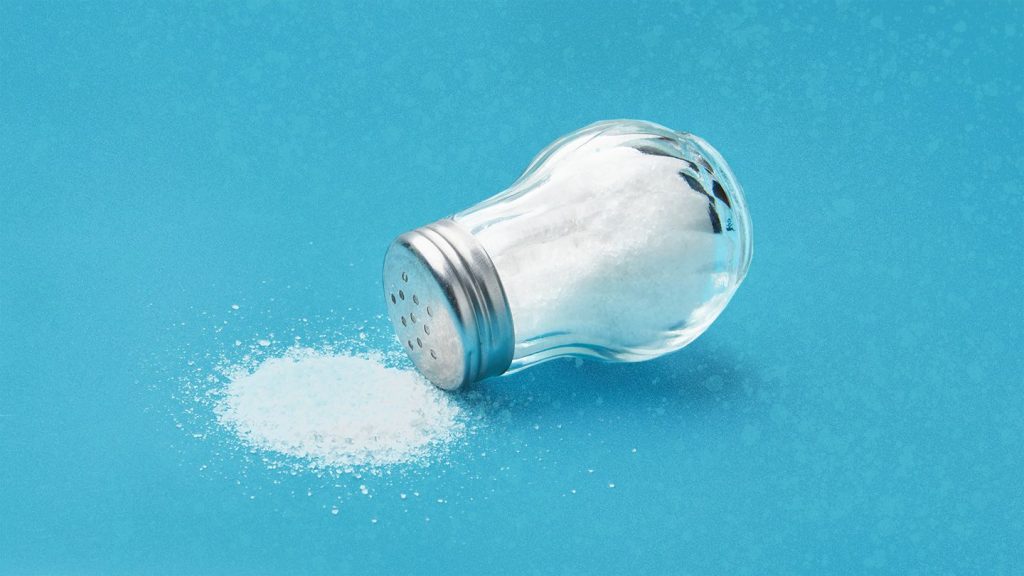
Diuretics—Water Pills
Thiazides—Strong Blood Pressure Drugs
First group is thiazides, medicines such as Hydrochlorothiazide and Chlorthalidone. Thiazides rank as weak diuretics, but they carry immense potential as a blood pressure medication. This is why thiazides remain the first-line blood pressure medication for many patients. In the early stages of CKD, thiazide can easily manage blood pressure and fluid balance. However, in late stages or if heart failure kicks in, these compounds confer no protection against excess water, requiring additional support.
Loop Diuretics—Potent Water Pills
This additional support, or more commonly, substitution, is provided by loop diuretics, such as Lasix or Bumex. These drugs are potent diuretics. They can bring the scale of water balance to a healthy level in a matter of days. Even though this strong action makes them the choice diuretics for heart failure or kidney failure, the same strength could cause a steep drop in kidney function if used without vigilance. Hence, it takes many weeks to fine-tune the dose of loop diuretics for patients with simultaneous heart and kidney failure.

The patient has to endure this ordeal every time he gets a setback. For example, whenever a patient’s heart failure gets out of control requiring hospital admission, the invalid has to go through the watchful period again before finding the appropriate dose for his new state.
Potassium Sparing Diuretics—A Nightmare
This epithet comes from the fact that, in contrast to other diuretics, drugs in this class do not enhance the potassium excretion in the urine. In this group, we have drugs like Aldactone and Eplerenone. Just like thiazides, these drugs are used primarily for blood pressure control and rarely as water pills. Even for blood pressure management, they are seldom used, for we have a slew of other drugs for blood pressure management. However, Aldactone is a mandatory drug for heart failure patients with weak pumping capacity. When these heart failure patients develop kidney failure, the medical team faces an unprecedented challenge. Like all other diuretics, Aldactone causes minor variations in creatinine levels, but the worst thing about this medicine is its effect on potassium, its ability to push the potassium level off the charts, making disease management a nightmare.
ACEIs and ARBs
These are two classes of drugs. ACEIs medications usually end in -pril, such as Lisinopril, while ARBs end with -tan, such as Losartan. For almost the last two decades, these formulas have proved a formidable tool for nephrologists to slow down the progression of kidney disease. Commonly known as blood pressure medications, these drugs confer additional benefits for kidney disease, benefits beyond controlling blood pressure. Furthermore, these beneficial effects are not limited to the kidney. The miracle drugs, research showed, fend the heart from further structural changes after a heart attack and heart failure.
Yet, their delivery and dosage in patients with combined heart and kidney failure pose a serious challenge. Minor deviation from a healthy routine can derail a stable patient, resulting in a series of adverse events: low blood pressure, worsening kidney function, and, most dangerously, the rise of potassium levels in the blood.
The Take Home
The combination of heart failure and kidney failure is a very challenging clinical scenario. Therefore, the first objective is always prevention, meaning that when one organ becomes sick, protect the other with every available means. However, such success is not always possible. Once a patent develops both heart and kidney failure, however, the best strategy to keep you from derailing is a healthy routine and compliance with medication and dietary restrictions. More importantly, avoid playing with your medication, for minor manipulations with medicines in these individuals can lead to larger-than-expected adverse events. So, if you have any concerns, talk to your physicians before tweaking these powerful tablets.

